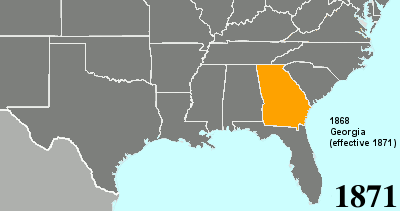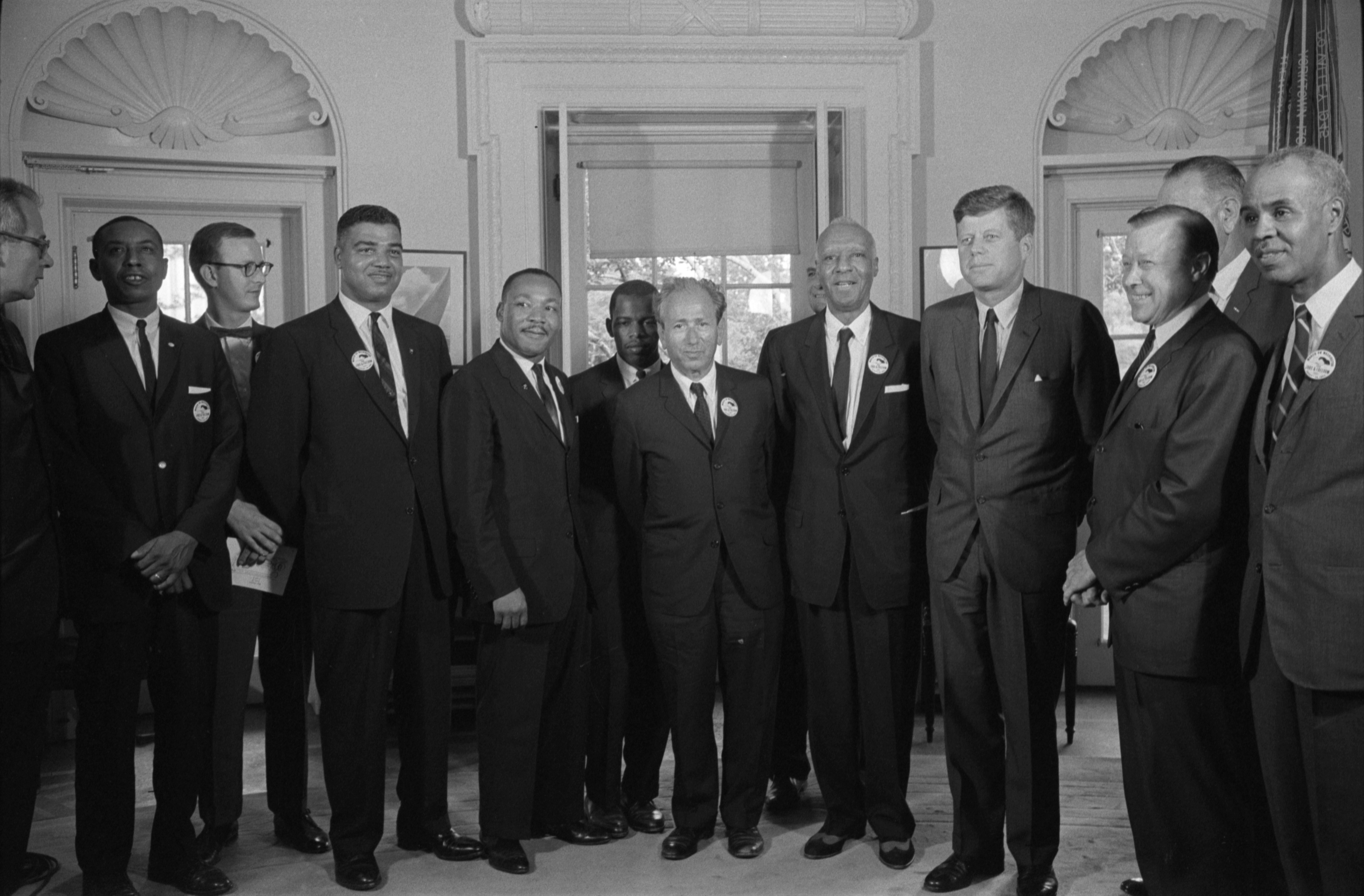|
Fred Schwengel
Frederick Delbert Schwengel (May 28, 1906April 1, 1993) was a Republican U.S. Representative from southeastern Iowa. Personal background Born on a farm near Sheffield, Iowa, to German immigrants, Schwengel attended the rural schools in West Fork Township and high schools in Chapin and Sheffield. He graduated from Northeast Missouri Teachers College at Kirksville, Missouri, in 1930 where he was an undergraduate member of Phi Sigma Epsilon fraternity, and attended graduate school at the University of Iowa in Iowa City from 1933 to 1935. To this day, Truman State University displays a collection of Schwengel's personal collection of Abraham Lincoln historical artifacts that were donated by Schwengel's wife, Ethel, after his death in 1993. Schwengel had founded the United States Capitol Historical Society in 1962, and continued to serve as its president after his defeat, until 1993. Early in his career, he served as national president of Phi Sigma Epsilon fraternity. He also w ... [...More Info...] [...Related Items...] OR: [Wikipedia] [Google] [Baidu] |
Iowa
Iowa ( ) is a U.S. state, state in the upper Midwestern United States, Midwestern region of the United States. It borders the Mississippi River to the east and the Missouri River and Big Sioux River to the west; Wisconsin to the northeast, Illinois to the east and southeast, Missouri to the south, Nebraska to the west, South Dakota to the northwest, and Minnesota to the north. Iowa is the List of U.S. states and territories by area, 26th largest in total area and the List of U.S. states and territories by population, 31st most populous of the List of states and territories of the United States, 50 U.S. states, with a population of 3.19 million. The state's List of capitals in the United States, capital, List of cities in Iowa, most populous city, and largest List of metropolitan statistical areas, metropolitan area fully located within the state is Des Moines, Iowa, Des Moines. A portion of the larger Omaha–Council Bluffs metropolitan area, Omaha, Nebraska, metropolitan area ... [...More Info...] [...Related Items...] OR: [Wikipedia] [Google] [Baidu] |
Phi Sigma Epsilon
Phi Sigma Epsilon () was a North American social fraternity that operated for 75 years (February 20, 1910 – August 14, 1985) until its merger with the Phi Sigma Kappa () fraternity. In 1985, most Phi Sigma Epsilon chapters participated in the merger.Lurding, Carroll and Becque, Fran.Inactive Men's Organizations in ''Almanac of Fraternities and Sororities''. Urbana: University of Illinois. Accessed October 31, 2022. Phi Sigma Kappa incorporated many of the symbols of Phi Sigma Epsilon into its own, changing its crest, and expanding its Cardinal Principals, symbolism, rituals, and historical canon to embrace the milestones of Phi Sigma Epsilon's development. These changes were soon fully adopted by all chapters of the fraternity which retained the name Phi Sigma Kappa. Before the merger, both fraternities used the nickname Phi Sig. This was one of many similarities between the groups. A few chapters and scattered alumni refused the merger, eventually forming a new national fraterni ... [...More Info...] [...Related Items...] OR: [Wikipedia] [Google] [Baidu] |
Phi Sigma Kappa
Phi Sigma Kappa (), colloquially known as Phi Sig or PSK, is a men's social and academic Fraternities and sororities, fraternity with approximately 74 List of Phi Sigma Kappa chapters#Chapters, active chapters and provisional chapters in North America. Most of its first two dozen chapters were granted to schools in New England, New York, and Pennsylvania; therefore its early development was strongly Eastern in character, eventually operating chapters at six of the eight Ivy League schools as well as more egalitarian state schools. It later expanded to the South and West. The fraternity has initiated more than 180,000 members since 1873. According to its Constitution, Phi Sigma Kappa is devoted to the promotion of its three Cardinal Principles: the "Promotion of Brotherhood", the "Stimulation of Scholarship", and the "Development of Character". Phi Sigma Kappa began on March 15, 1873, at Massachusetts Agricultural College in Amherst, Massachusetts, Amherst (now the University of M ... [...More Info...] [...Related Items...] OR: [Wikipedia] [Google] [Baidu] |
Baptist Joint Committee For Religious Liberty
The Baptist Joint Committee for Religious Liberty (BJC) is a US faith-based organization which focuses on upholding the historic Baptist principle of religious liberty. With a staff of attorneys, public intellectuals, ministers and mobilizers, the Washington D.C.–based non-profit has a long history of advocating in the U.S. Supreme Court and working with Congress on issues relating to religious freedom and church-state separation. The BJC analyzes new legal cases and legislation within the larger framework of how best to protect the First Amendment right to religious freedom for all. In recent years, the BJC has gone to the Supreme Court and filed ''amicus curiae'' (friend-of-the-court) briefs defending a potential employee's right to wear her hijab to work, opposing the travel ban, and opposing certain government-sponsored displays of religion, such as the giant free-standing cross in a government-owned intersection in Bladensburg, Maryland. On the legislation front, the BJC ... [...More Info...] [...Related Items...] OR: [Wikipedia] [Google] [Baidu] |
I-80 Bridge
I8 or I-8 may refer to: * Interstate 8, a highway in the southwestern United States * ''Interstate 8'' (EP), an extended play by Modest Mouse * '' Resistance: Fall of Man'', a video game originally known as ''I-8'' * Straight-eight engine, an uncommon internal combustion engine * , a submarine of the Imperial Japanese Navy * BMW i8, a plug-in hybrid sports car * Uppland Regiment, a Swedish Army infantry regiment disbanded in 1957 * i8, a name for the 8-bit signed integer, especially in Rust Rust is an iron oxide, a usually reddish-brown oxide formed by the reaction of iron and oxygen in the catalytic presence of water or air moisture. Rust consists of hydrous iron(III) oxides (Fe2O3·nH2O) and iron(III) oxide-hydroxide (FeO(OH) ... See also * 8I (other) {{Letter-Number Combination Disambiguation ... [...More Info...] [...Related Items...] OR: [Wikipedia] [Google] [Baidu] |
Twenty-fourth Amendment To The United States Constitution
The Twenty-fourth Amendment (Amendment XXIV) of the United States Constitution prohibits both US Congress, Congress and the US states, states from requiring the payment of a Poll taxes in the United States, poll tax or any other tax to vote in US federal election, federal elections. The amendment was proposed by Congress to the states on August 27, 1962, and was ratified by the states on January 23, 1964. Southern United States, Southern states of the former Confederate States of America adopted Poll taxes in the United States, poll taxes both in their state laws and in their state constitutions throughout the late-19th and early-20th centuries. This became more widespread as the Democratic Party regained control of most levels of government in the South in the decades after Reconstruction era of the United States, Reconstruction. The purpose of poll taxes was to prevent African Americans and poor whites from voting. Use of the poll tax by states was held to be constitutional b ... [...More Info...] [...Related Items...] OR: [Wikipedia] [Google] [Baidu] |
Civil Rights Act Of 1968
The Civil Rights Act of 1968 () is a Lists of landmark court decisions, landmark law in the United States signed into law by President of the United States, United States President Lyndon B. Johnson during the King assassination riots. Titles II through VII comprise the Indian Civil Rights Act, which applies to the Native Americans in the United States, Native American tribes of the United States and makes many but not all of the guarantees of the United States Bill of Rights, U.S. Bill of Rights applicable within the tribes. (That Act appears today in Title 25, sections 1301 to 1303 of the United States Code). Titles VIII and IX are commonly known as the Fair Housing Act, which was meant as a follow-up to the Civil Rights Act of 1964. (This is different legislation than the Housing and Urban Development Act of 1968, which expanded housing funding programs.) While the Civil Rights Act of 1866 prohibited discrimination in housing, there were no federal enforcement provisions. T ... [...More Info...] [...Related Items...] OR: [Wikipedia] [Google] [Baidu] |
Civil Rights Act Of 1964
The Civil Rights Act of 1964 () is a landmark civil rights and United States labor law, labor law in the United States that outlaws discrimination based on Race (human categorization), race, Person of color, color, religion, sex, and national origin. It prohibits unequal application of voter registration requirements, racial segregation in schools and public accommodations, and employment discrimination. The act "remains one of the most significant legislative achievements in American history". Initially, powers given to enforce the act were weak, but these were supplemented during later years. Congress asserted its authority to legislate under several different parts of the United States Constitution, principally its Enumerated powers (United States), enumerated power to regulate interstate commerce under the Commerce Clause of Article One of the United States Constitution#Section 8: Powers of Congress, Article I, Section 8, its duty to guarantee all citizens Equal Protectio ... [...More Info...] [...Related Items...] OR: [Wikipedia] [Google] [Baidu] |
Civil Rights Act Of 1960
The Civil Rights Act of 1960 () is a United States federal law that established federal inspection of local voter registration polls and introduced penalties for anyone who obstructed someone's attempt to register to vote. It dealt primarily with discriminatory laws and practices in the segregated South, by which African-Americans and Tejanos had been effectively disenfranchised since the late 19th and start of the 20th century. This was the fifth Civil Rights Act to be enacted in United States history. Over an 85-year period, it was preceded only by the Civil Rights Act of 1957, whose shortcomings largely influenced its creation. This law served to more effectively enforce what was set forth in the 1957 act through eliminating certain loopholes in it, and to establish additional provisions. Aside from addressing voting rights, the Civil Rights Act of 1960 also imposed criminal penalties for obstruction of court orders to limit resistance to the Supreme Court's school desegrega ... [...More Info...] [...Related Items...] OR: [Wikipedia] [Google] [Baidu] |
Civil Rights Act Of 1957
The Civil Rights Act of 1957 was the first federal civil rights law passed by the United States Congress since the Civil Rights Act of 1875. The bill was passed by the 85th United States Congress and signed into law by President Dwight D. Eisenhower on September 9, 1957. The Supreme Court's 1954 ruling in the case of '' Brown v. Board of Education'' brought the issue of school desegregation to the fore of public attention, as Southern Democratic leaders began a campaign of " massive resistance" against desegregation. In the midst of this campaign, President Eisenhower proposed the bill to provide federal protection for African American voting rights; most African Americans in the Southern United States had been disenfranchised by state and local laws. Though the bill passed Congress, opponents of the act were able, in the Senate, to remove stringent voting protection clauses via the Anderson–Aiken amendment and the O'Mahoney jury trial amendment, significantly watering ... [...More Info...] [...Related Items...] OR: [Wikipedia] [Google] [Baidu] |
Davenport, Iowa
Davenport ( ) is a city in Scott County, Iowa, United States, and its county seat. It is situated along the Mississippi River on the eastern border of the state. Davenport had a population of 101,724 as of the 2020 United States census, 2020 census, making it Iowa's List of cities in Iowa, third-most populous city, after Des Moines and Cedar Rapids. It is the largest of the Quad Cities in Iowa and Illinois, a metropolitan statistical area, metropolitan area with a population of 384,324 and a List of Combined Statistical Areas, combined statistical area population of 474,019. Davenport was founded on May 14, 1836, by Antoine Le Claire and named for his friend, George Davenport. From 1860 until 1980, Davenport enjoyed a long period of industrial and population growth, averaging yearly increases of about 760 people. Over that period, Davenport industries were diverse, from manufacturing locomotives, a major meat-packing plant, a Caterpillar loader plant, a historic movie-projector p ... [...More Info...] [...Related Items...] OR: [Wikipedia] [Google] [Baidu] |
Shelbina, Missouri
Shelbina is a city in southern Shelby County, Missouri, United States. The population was 1,613 at the 2020 census. History Shelbina was platted in 1857 when the railroad was extended to that point. The name "Shelbina" is derived from Shelby County. A post office called Shelbina has been in operation since 1858. The Benjamin House was listed on the National Register of Historic Places in 1972. Geography Shelbina is located in south central Shelby County at the intersection of US Route 36 and Missouri Route 15. It is two miles north of the Shelby-Monroe county line. Shelbyville is seven miles to the north along Route 15. The headwaters of Clear Creek arise just to the west of the city.''Missouri Atlas & Gazetteer'' DeLorme, 1998, First edition, p. 24 According to the United States Census Bureau, the city has a total area of , all land. Climate Demographics 2010 census As of the census of 2010, there were 1,704 people, 717 households, and 443 families living in the c ... [...More Info...] [...Related Items...] OR: [Wikipedia] [Google] [Baidu] |





